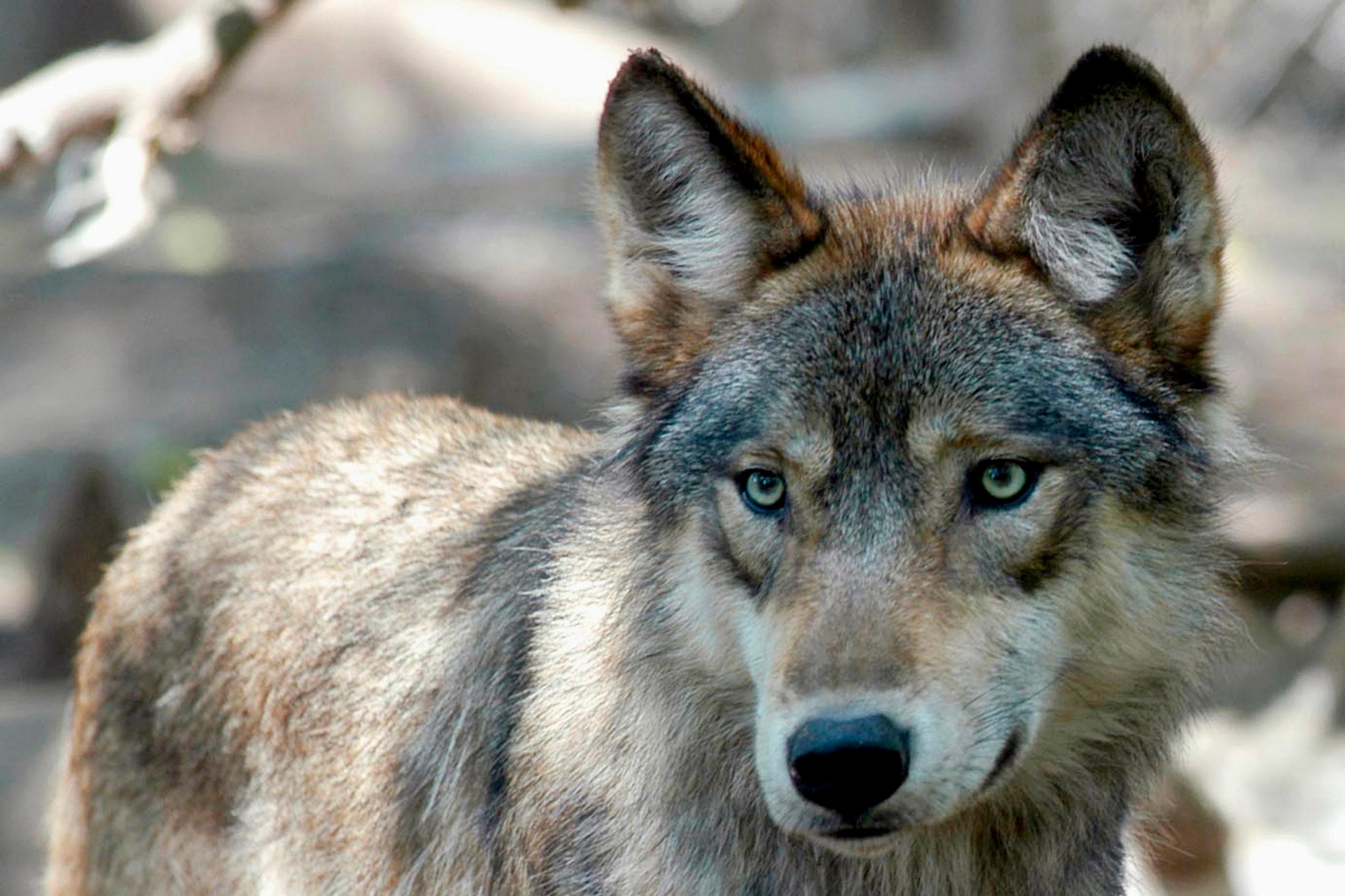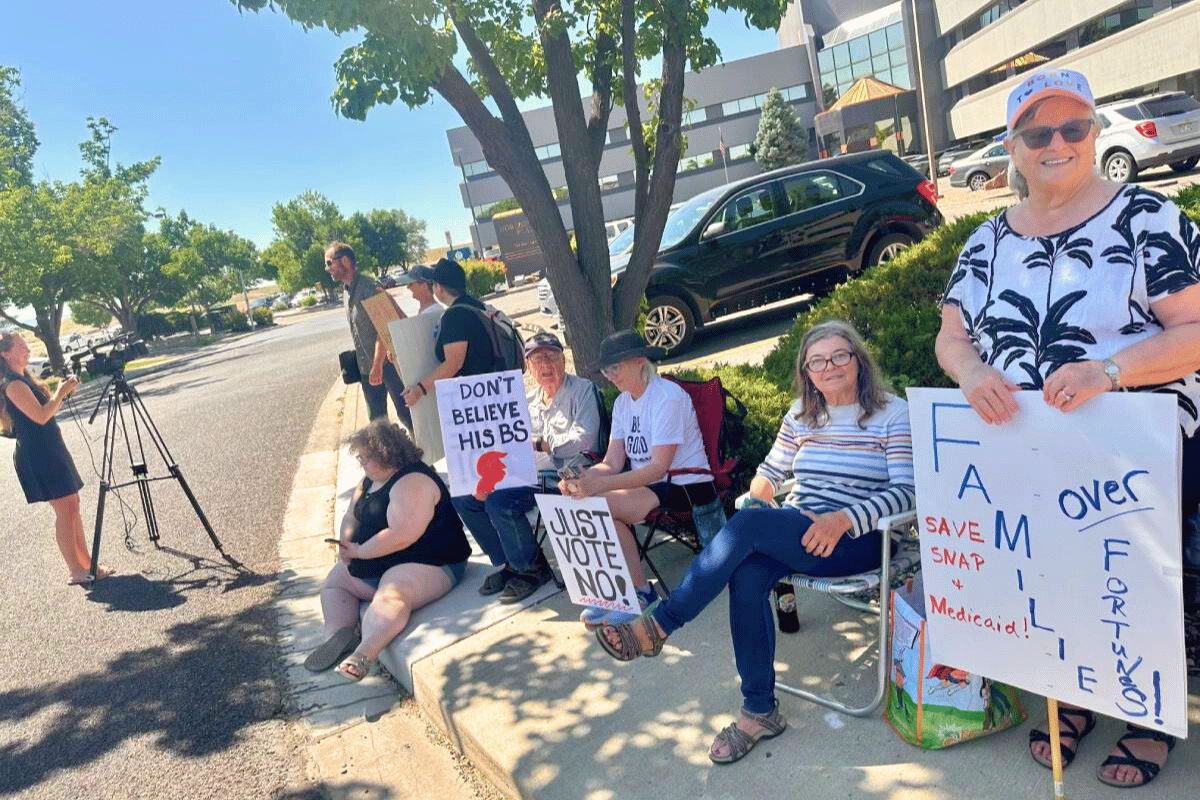
About two weeks ago, Mike Phillips, a Montana state senator and career wildlife biologist, received a single-page letter with two typed lines.
“At least three wolves have been shot from the pack in Colorado,” it read. “Multiple agencies know and I thought you should know as well.”
It was postmarked in Cheyenne and signed “anonymous.”
Phillips immediately understood the political and biological implications. As Colorado sets to vote on wolf reintroduction, a likely pack in northwest Colorado has come to symbolize the possibility that gray wolves could recolonize the state on their own.
Now, CPR News has now been able to confirm the basic claim of the letter. Multiple agencies are, in fact, aware three members of the group may have been killed, most likely in Wyoming.
“It illustrates the fitful nature of restoration if you’re waiting on wolves wandering from the tough landscape of Wyoming,” said Phillips, who serves as a science adviser for the campaign behind the ballot initiative for Colorado wolf reintroduction.
While that initiative has wide support according to one survey, the Colorado wolf pack has complicated the effort. Last winter, Colorado Parks and Wildlife announced six of the animals appeared to be living in the far northwest corner of the state. Lone wolves had wandered into Colorado before, but the new arrivals were the first evidence of a possible pack since humans eradicated the species in the 1940s.
Ranchers and farmers against reintroduction immediately picked up the news. If wolves were already on their way back to Colorado, why should people go through the trouble of actively returning them?
Since then, Colorado Parks and Wildlife has published regular updates about the wolves, but the agency did not share any information about the possibility that some of those animals may have been killed.
Rebecca Ferrell, a spokesperson with Colorado Parks and Wildlife, said the agency first learned about the prospect in May. That’s when a Colorado resident told Bill deVergie, a CPW area wildlife manager, about killing two wolves across the border in Wyoming in March.
In late May, Ferrell said the agency also learned about a U.S. Fish and Wildlife Service investigation regarding wolf killings along the Colorado-Wyoming border. Discussion about the work revealed a third wolf may have been taken. A USFWS spokesperson confirmed the presence of an inquiry on the topic, but could not provide any further comment or detail “due to the nature of ongoing investigations.”
Since the wolves have not been radio-collared, Ferrell said her agency can’t be sure whether any wolves from the Colorado pack have been killed, but it is a strong possibility given what the agency knows about the locations of the potential takings.
“It is reasonable to assume, based on how the animals have been moving between states, they may have been part of the group that was spotted in Colorado,” Ferrell said.
Kevin Crooks, a wildlife ecologist with Colorado State University, agreed with the assessment. He said since the pack has been observed so close to the border, it’s “conceivable” the animals crossed into Wyoming.
If wolves were killed north of the state border, it would almost certainly be legal. In Colorado, wolves are still protected under the Endangered Species Act, which means killing one of the animals could result in up to a year in prison and a $100,000 fine.
The situation is far different in Wyoming. In 2017, the U.S. Fish and Wildlife Service handed gray wolf management over to the state after a court removed the federal protections for the species. Wyoming has since created a “predatory animal management area,” where wolves can be killed without a permit. The area includes 85 percent of the state, including the entirety of the Colorado-Wyoming border.
While any wolf killings in the zone must be reported to the Wyoming Game and Fish Department within 10 days, state statutes protect the information from public view.
That’s why Ferrell said her agency did not immediately share their knowledge about the potential wolf killings. CPW does not have any ”precedent or reason” to report on legal hunting in other states, especially when the information is not public. As for the federal investigation, Ferrell said, “it wouldn't be appropriate for CPW to report on an active investigation or share speculative information.”
Meanwhile, CPW has continued to monitor the wolves in northwest Colorado. While biologists last saw the full group of six last January, other signs indicated multiple wolves are still living in the area. Tracks have been recorded as recently as August. A camera trap also captured a picture of two wolves in the area last July.
The agency has also been monitoring the area for wolf pups. This summer, a CPW biologist reported seeing an adult wolf and a pup in northwest Colorado but was unable to capture a photograph or other physical evidence. Staff biologists have also been conducting “howl surveys,” where people howl and listen for responses from adult wolves or their pups. According to data obtained by CPR News, those surveys found possible evidence of pups in June and late July.
The agency has yet to confirm the evidence of pups in the area.
No matter the status of the wolf pack, any news is certain to become a political football in the upcoming ballot fight. Phillips, the biologist who first received the letter, already sees any potential wolf killings as an argument for reintroduction.
“The prospects of wolves wandering from Wyoming is a fool’s errand,” he said. “If Coloradans aspire to have gray wolves in the state, they need to reintroduce them.”
Shawn Martini, who is leading a campaign to oppose the initiative, said the basic situation hasn't changed. Wolves remain protected in Colorado. The state wildlife commission also reaffirmed its position against wolf reintroduction in 2016, noting the animals could come into conflict with livestock and big game management efforts.
“The fact remains that wolves are already in Colorado, and wildlife officials have said it's not a good idea to artificially introduce more at taxpayer expense,” he said.
“We think voters should listen to them."









